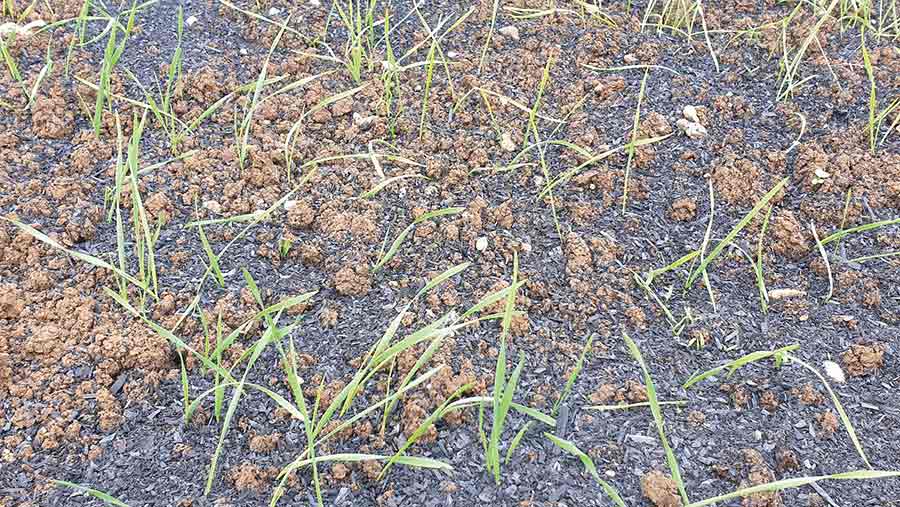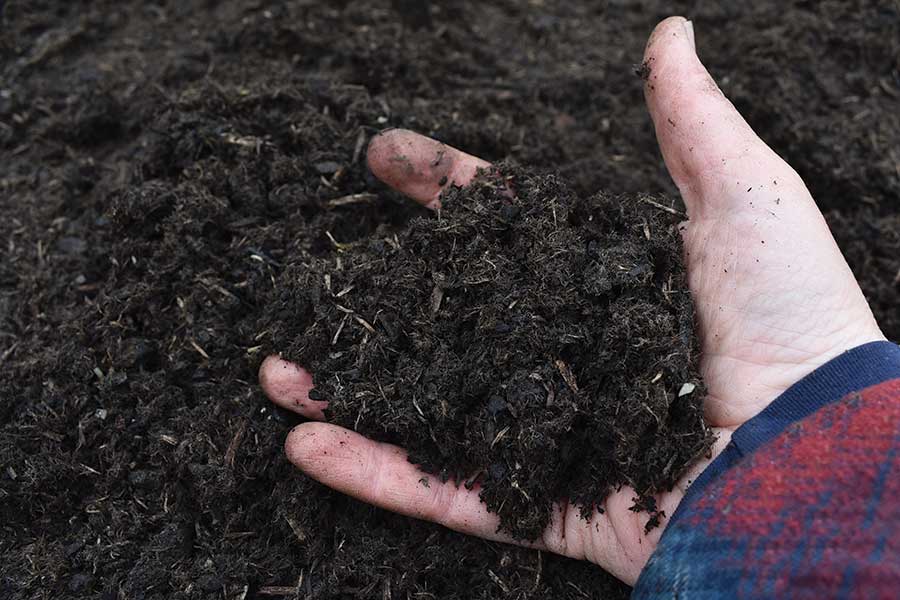Start-up helps farmers make own biochar for soil benefits
 Biochar applied to a cereal crop © Adam Samuel
Biochar applied to a cereal crop © Adam Samuel Farmers looking to improve soil organic matter, reduce nutrient losses and increase carbon capture may soon be able to produce their own biochar on farm.
Biochar is the lightweight, carbon-rich end product of pyrolysis – heating organic material to temperatures of 300-700C in an oxygen-limited environment.
The black, charcoal-like residue contains 75-80% pure carbon and can be used on farm as a soil amendment with many potential benefits.
See also: Gold-winning winter barley crop smashes yield potential
Scaling-up production
Start-up company Capchar aims to facilitate on-farm biochar production by developing pyrolysis kiln technology.
Company co-founder Adam Samuel explains: “Farm-scale pyrolysis kilns offer a scalable pathway for farmers to produce their own biochar with locally available feedstock such as tree and hedge clippings.
“Our target is to deliver over 600 kilns on farm by 2030.”
Virtually any organic material can be pyrolysed to make biochar, including woody materials, plant tissue and manures, but depending on the waste status of the input materials, a permit may be required before doing so.
Because organic matter has widely varied particle sizes and chemical make up, different feedstocks will result in different biochar characteristics.
Capchar is currently developing its 2cu m prototype kiln with a focus on woodchips as the main feedstock.

© EvaRuth/Adobe Stock
The benefits
Using biochar as a soil amendment creates a more habitable environment for the soil microbiome, including bacteria and fungi, leading to better nutrient availability.
This in turn can increase crop health and above-ground biomass, and in some cases can promote yield.
Capchar is currently working with the Royal Agricultural University, investigating the impacts of biochar on a crop of spring wheat.
Yield, disease and above-ground biomass will be all assessed, alongside the impacts of tillage and nutrition. Results will be available this harvest.
Current legislation allows a maximum of 1t/ha of biochar to be applied to land in a 12-month period. If the feedstock is classed as a waste product, however, it is possible to apply for an exemption.
About 4t of woodchip is required to produce 1t of biochar, which equates to 2-2.5t of carbon dioxide equivalents.
Adam says: “Due to the stability of the carbon produced, when applied to the land, approximately 74% will remain in the ground for more than a 100-year period.
“It is this process that forms the basis for a carbon removal certificate.”
Capchar intends to provide farmers with both hardware and software technology with the launch of an app which will track and verify carbon removal certificates.
“Our business model is to provide kiln technology and carbon credit verification in return for a monthly fee,” Adam says.
“Farmers receive a value-added material that can be incorporated into current farming practices, and the by-product of heat which can be used to dry grain, for example.”
The residue can be added to existing organic matters such as manure, compost and digestate and applied to soil to boost nutrient use efficiency.
It can also be added to animal bedding to begin the co-composting process. It can even be added to slurry pits to reduce ammonia emissions and further promote nutrient use efficiency.

